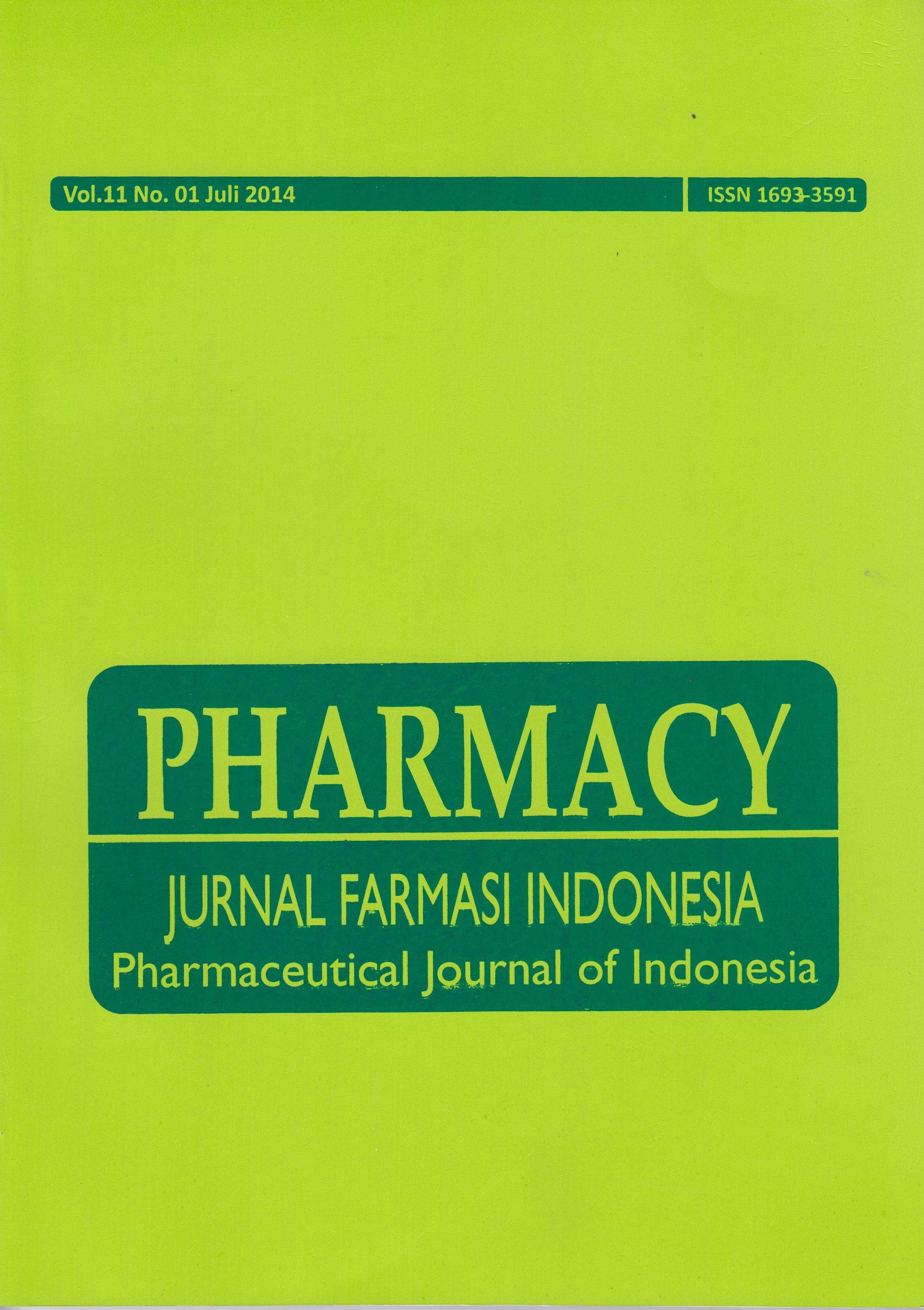COST EFFECTIVENESS ANALYSIS PENGOBATAN PASIEN DEMAM TIFOID PEDIATRIK MENGGUNAKAN CEFOTAXIME DAN CHLORAMPHENICOL DI INSTALASI RAWAT INAP RSUD PROF. DR. MARGONO SOEKARJO
DOI:
https://doi.org/10.30595/pji.v11i1.854Abstract
ABSTRAK Di Indonesia insiden demam tifoid banyak dijumpai pada populasi yang berusia 3-19 tahun. Resistensi luas antibiotik aktif terhadap Salmonella typhi banyak ditemui salah satunya chloramphenicol. Chloramphenicol adalah antibiotik pilihan pertama untuk tifoid pediatrik di RSUD Prof. Dr. Margono Soekarjo Purwokerto. Telah dilakukan penelitian cost effectiveness analysis menggunakan metode observasional analitik dengan rancangan cross sectional, pengambilan data menggunakan pendekatan retrospektif melalui penelusuran rekam medik pasien. Terdapat 87 pasien yang masuk dalam penelitian ini, 64 pasien mendapatkan chloramphenicol dan 23 pasien mendapatkan cefotaxime. Total biaya rata-rata pasien demam tifoid pediatrik yang mendapat chloramphenicol sebesar Rp1.453.618,00 sedangkan pada pasien yang mendapat cefotaxime sebesar Rp1.319.413,00. Berdasarkan waktu bebas demam pasien, nilai ACER chloramphenicol sebesar Rp983.969,00 per hari bebas demam, sedangkan cefotaxime sebesar Rp761.917,00 per hari bebas demam dengan nilai ICER sebesar Rp-527.535,00 per hari bebas demam. Untuk lama rawat pasien, nilai ACER chloramphenicol sebesar Rp299.098,00 per hari rawat sedangakan cefotaxime sebesar Rp297.835,00 per hari rawat dengan nilai ICER sebesar Rp312.104,00 per hari pengurangan lama rawat. Sehingga cefotaxime lebih cost effective dibandingkan dengan chloramphenicol. Kata kunci: demam tifoid pediatrik, cefotaxime, chloramphenicol. ABSTRACT In Indonesia, incidences of typhoid fever were commonly identified among the population of 3 to 19 years. There is a wide resistance of active antibiotics to Salmonella Typhi, one of which is chloramphenicol. The first option of antibiotics for pediatric typhoid in a local hospital of Purwokerto is chloramphenicol. The method applied was analytical observation using cross-sectional design. The data collection was done using retrospective approach through examining patient’s medical record. Among 87 patients taken as the data, 64 patients were given chloramphenicol and 23 patients took cefotaxime. The average cost of chloramphenicol medication was Rp1.453.618,00, and that of cefotaxime was Rp1.319.413,00. Based their fever –free time, the value of ACER among the patients treated with chloramphenicol was Rp983.969,00 at the fever-free day, that of cefotaxime was Rp761.917,00 at the fever-free day, with ICER value of Rp-527.535,00 per fever-free day. In terms of their treatment period, ACER value of chloramphenicol was Rp299.098,00 per day in hospitalization. Meanwhile, the value of cefotaxime was Rp297.835,00 per day in hospitalization with ICER value of Rp312.104,00 per day of reduction in hospitalization. So cefotaxime more cost effective than chloramphenicol. Key words: pediatric typhoid fever, cefotaxime, chloramphenicol.References
Andayani, T.M., 2013. Farmakoekonomi prinsip dan metodologi. Yogyakarta: Bursa Ilmu.
Dahlan, M.S., 2011. Statistika untuk kedokteran dan kesehatan, Edisi 5. Jakarta: Salemba Medika.
Hadinegoro, S.R., 2001. Strategi pengobatan demam tifoid pada anak. Dalam: Akib, A. A. P., Tumbelaka, A.R., Matondang, C. S., penyunting. Naskah lengkap PKB ilmu kesehatan anak XLIV. Pendekatan imunologis berbagai penyakit alergi dan infeksi. Jakarta: FKUI.
Herawati, M.H. dan Ghani, L., 2009. Hubungan faktor determinan dengan kejadian tifoid di Indonesia tahun 2007, Media Peneliti dan Pengembangan Kesehatan, XIX:165-173.
Nelwan, R.H.H., 2012. Tata laksana terkini demam tifoid, continuing medical education, CDK 39:247-250.
Rampengan H.N., 2013. Antibiotik terapi demam tifoid tanpa komplikasi pada anak, Sari Pediatri, 14:271-276.
Downloads
Published
How to Cite
Issue
Section
License
Authors who publish with this journal agree to the following terms:
- Authors retain copyright and grant the journal right of first publication with the work simultaneously licensed under a Creative Commons Attribution 4.0 International License that allows others to share the work with an acknowledgement of the work's authorship and initial publication in this journal.
- Authors are able to enter into separate, additional contractual arrangements for the non-exclusive distribution of the journal's published version of the work (e.g., post it to an institutional repository or publish it in a book), with an acknowledgement of its initial publication in this journal.
- Authors are permitted and encouraged to post their work online (e.g., in institutional repositories or on their website) prior to and during the submission process, as it can lead to productive exchanges, as well as earlier and greater citation of published work (See The Effect of Open Access).






